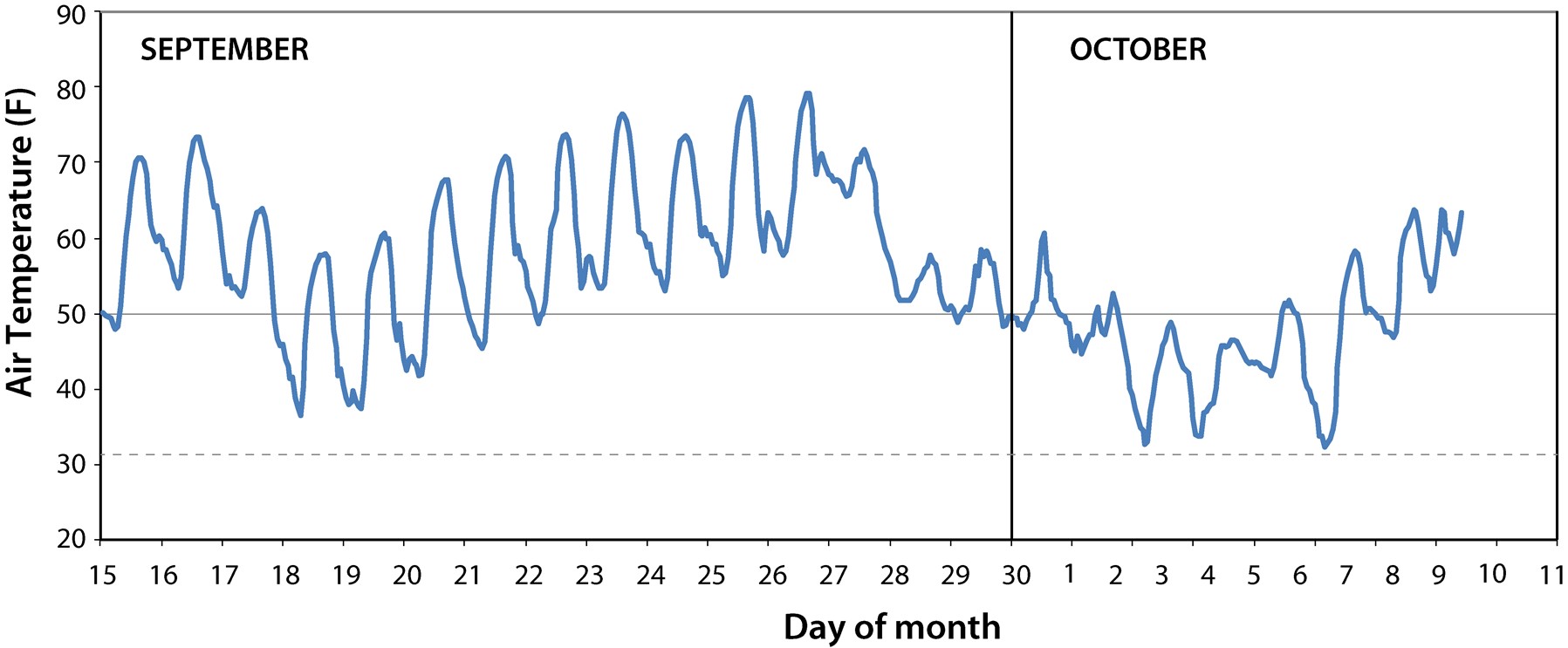Oct 7, 2020Harvest watercore-susceptible apples before symptoms become severe
Watercore is a persistent problem in apple and highly cultivar dependent. Some of our most popular cultivars can have serious problems with this physiological disorder.
These include Red Delicious, Fuji, Honeycrisp, Jonagold, Granny Smith and Braeburn. Even some of our newer cultivars like Evercrisp (a Honeycrisp by Fuji cross) have susceptibility to watercore.
Apart from cultivar, several other factors are known to influence watercore incidence and severity. Perhaps the most important is fruit maturity. Overwhelming evidence suggests that advanced maturity is a required feature for the development of watercore, so those factors that advance fruit maturity can promote watercore development.
One often overlooked factor accelerating fruit maturation is low temperature during the harvest season. Several apple cultivars, including Fuji, Braeburn and Granny Smith, have been shown to produce more ethylene and ripen more quickly following a few days exposure to temperatures below 50 degrees Fahrenheit. In studies on this phenomenon, cool temperatures were also found to enhance softening during storage. In fact, in another set of studies on the impact of low temperatures, it was also shown that temperatures near freezing can induce fruit softening even in the absence of ethylene action. However, the effect is relatively minor but it does speak to the impressive impact of low temperatures on growth and development of apples in the field.
Interestingly, both high fruit temperatures and low fruit temperatures have been linked to watercore development. Likely both environmental regimes act, at least in part, by advancing maturity. Warm weather advances maturity by driving faster fruit development and, as noted, low temperatures trigger ripening by promoting ethylene formation.
So far this year, we have had several frost events in Michigan and many days and nights during which the temperatures were well below 50˚ F (Photo 2). Perhaps linked to this, the apple maturity program data for fruit harvested Oct. 5, 2020, reveals we are seeing early production of ethylene by Fuji, Granny Smith and Evercrisp fruit.


Another important factor affecting watercore is a high source-to-sink ratio for carbon fixed via photosynthesis. This means that those factors that drive photosynthesis, like warm days and clear skies, will enhance the production of photosynthates. However, when fruit demand for photosynthates is low, their sink strength is poor. Net photosynthesis maximizes about midday, but carbon unloading into the fruit maximizes several hours later and continues throughout the night. As air and fruit temperatures drop, the sink strength of fruits would be low.
You can easily imagine then that the photosynthate fixed during the day has essentially nowhere to go as fruit temperatures plummet on cool autumn nights. Watercore development has been suggested to result when the fruit cannot import the photosynthate into their cells, leaving it to accumulate in the air spaces between the cells, leaving a water-soaked appearance.
Watercore development ceases upon harvest, but its presence is of concern for the fruit’s marketability and storability. Watercore-affected fruits can be stored but often do not store as well as those fruit without watercore. If the injury is severe, i.e., more than the mild symptoms in Figure 1, it can lead to internal browning.
There is some concern that this fall, continuing into the week to come, seems to be tailor-made for promoting watercore. Warm daytime temperatures with lots of light will promote photosynthate accumulation and cool nighttime temperatures will drive ripening while simultaneously restricting the unloading of carbohydrate into the fruit. Collectively, the information we have suggests this may be a difficult year for managing watercore in Michigan and we caution our apple producers to be vigilant for its development and harvest susceptible cultivars in a timely manner.
– Randy Beaudry, Michigan State University, Department of Horticulture
Figure 1 at top. Watercore in Michigan apples. Left panel: Jonagold with mild symptoms. Right panel: Scab-resistant apple line CQR10T17 with severe symptoms. Photos: Randy Beaudry/MSU















